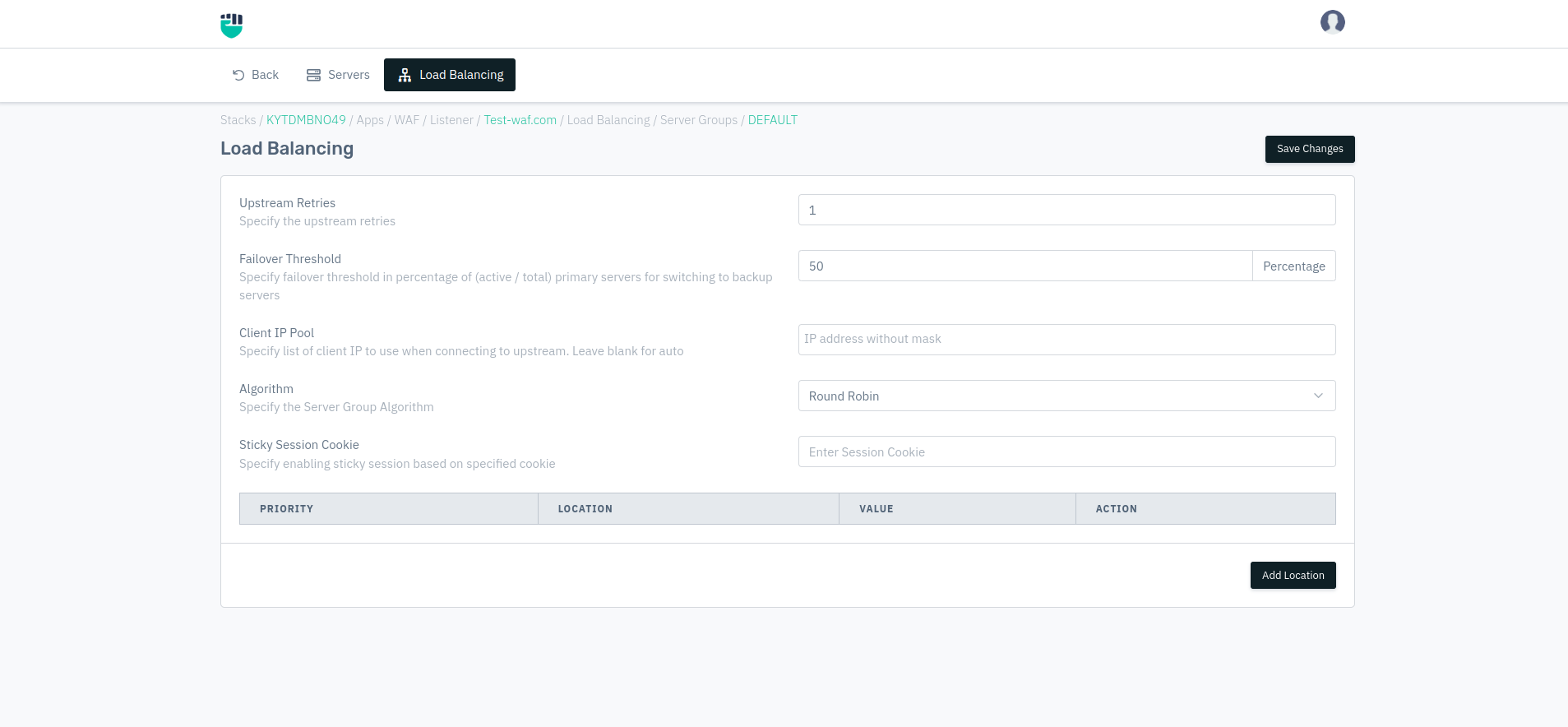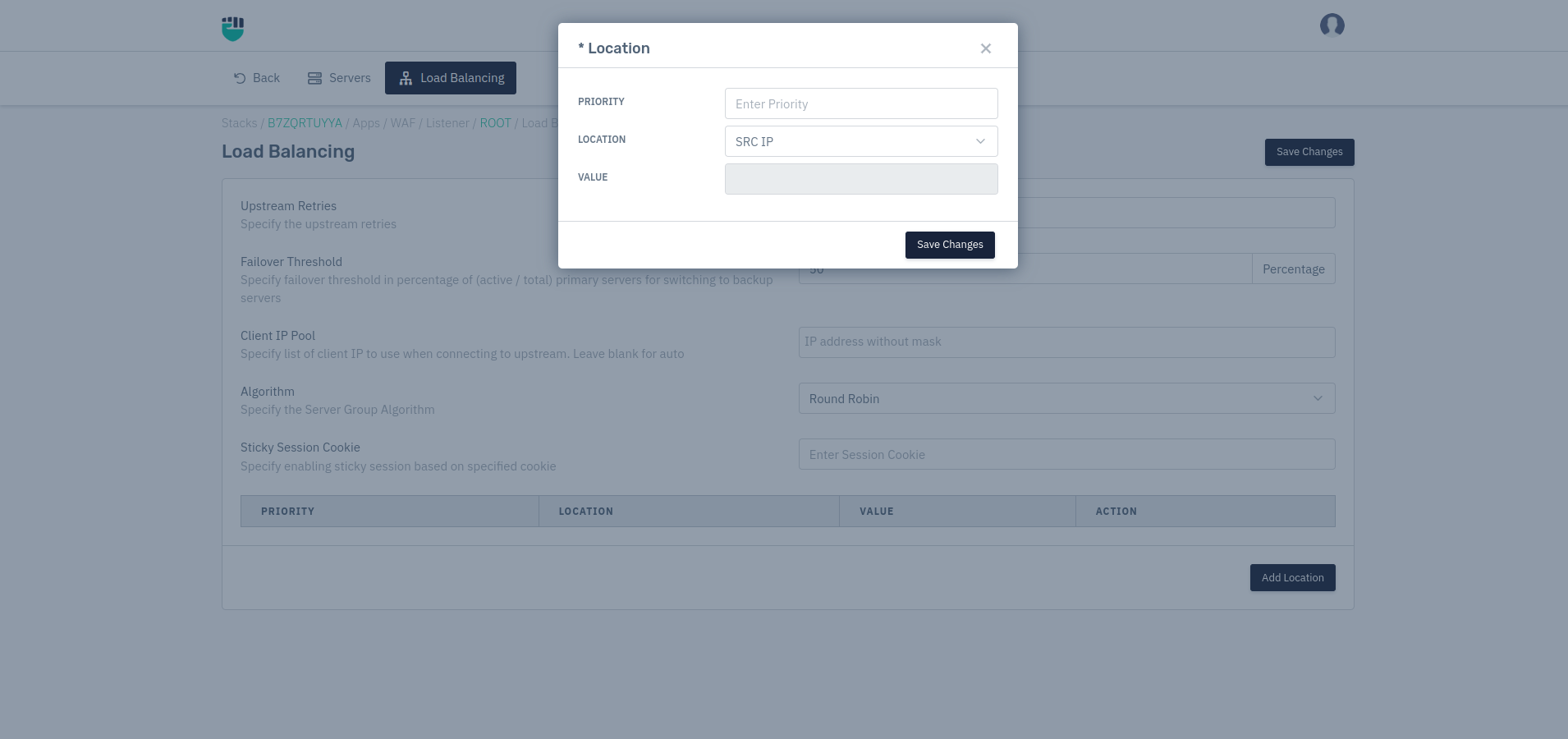Load Balancing
Load Balancing mechanism used for WAF
Overview
Load balancing across multiple application instances is a commonly used technique for optimizing resource utilization, maximizing throughput, reducing latency, and ensuring fault-tolerant configurations.

Load Balancing Algorithms
This field specifies the load balancing algorithm according to the configured website.
-
ROUND ROBIN: This algorithm is a smart approach to distribute client requests across an array of servers. It forwards the client request to each server in turn. Also, assigns a weight to each server as per current load and idle capacity.
-
LEAST CONNECTIONS: This algorithm is a dynamic load balancing algorithm. It forwards client requests to the server, which has the least no. of active connections on the server.
-
LEAST LISTENER CONNECTIONS: This algorithm is a dynamic load balancing algorithm. It forwards client requests to the server, which have a small response time in order to serve requests.
-
LEAST RESPONSE TIME: This algorithm is a dynamic load balancing algorithm. It forwards client requests to the server, which have a small response time in order to serve requests.
-
MINIMUM JITTER: This algorithm is a dynamic load balancing algorithm. It forwards client requests to the server, which have served the minimum jitter. NOTE: For this algorithm to work, the server group should have ICMP monitor attached.
-
IP HASH: This algorithm takes the client's and server's source and destination IP address to generate a unique hash key. This key is used to assign the client to a specific server. In the case of a broken session, the key can be regenerated, and the client can be directed to the same server.
-
PERSISTENT HASH: This algorithm takes the user input location within the current request to generate a user-defined custom unique hash key. This key is used to assign the client to a specific server. In the case of a broken session, the key can be regenerated, and the client can be directed to the same server. NOTE: In hashing-based load balancing, if a specified value does not exists then the request is served on the basis of client's IP address.
-
Least Requests: This algorithm is a dynamic load balancing algorithm. It forwards client requests to the server, which have served the minimum amount of requests.
-
SNMP Metrics: This algorithm is a dynamic load balancing algorithm. It forwards client requests to the server, which have least CPU / RAM usage. NOTE: For this algorithm to work, the server group should have SNMP monitor attached.

How to Use:
-
Go to WAF > Listeners > Server Groups > Load Balancing
-
Set the configurations and Save Changes.
Description
Upstream Retries
This option used to specify the upstream retries. By default, the value is set to 1.
Accepted values: Integer
Default: 1
Fail-over Threshold
This option specify the fail-over threshold in percentage of (active/total) primary servers for switching to backup servers. By default, the value is set to 50%.
Accepted values: Integer
Max: 100
Min: 1
Default: 50
Client IP Pool
Specify list of client IP to use when connecting to upstream. Leave blank for auto
Accepted values: list of client IP
Default: Blank
Algorithm
This option is used to specify the algorithm used by the server group. By default, the value is selected as Round Robin.
Accepted values: Round Robin / Least Connection / Least Listener Connection / Least Response Time / Minium Jitter / IP Hash / Persistent Hash / Least Requests / SNMP Metrics
Default: Round Robin
Sticky Session Cookie
Specify enabling sticky session based on specified cookie
Accepted values: Integer
Default: 1
Location
Priority
Set the priority
Accepted values: Integer
Default: Blank
Location
Set the priority
Accepted values: SRC_IP / DST_IP / SRC_PORT / DST_PORT / URL / ARG_VAL / HEADER_VAL / COOKIE_VAL
Default: SRC_IP
Value
Set the location
Accepted values: String
Default: Blank